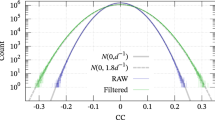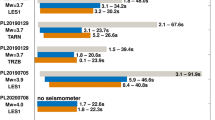Abstract
THIS communication is based on observations of the Sputnik 3 signal strength carried out from the end of November 1958 at Kiruna Geophysical Observatory, Sweden (67.8° N., 20.4° E.). The 20.005 Mc./s. signals were received on a standard communications receiver (Collins 51 J–4) and recorded on a mV. -pen recorder with a full-scale deflexion time of approximately 1 sec. The receiver was connected to a fixed ‘quad’ 20 Mc./s. antenna with a very low directivity.
This is a preview of subscription content, access via your institution
Access options
Subscribe to this journal
Receive 51 print issues and online access
$199.00 per year
only $3.90 per issue
Buy this article
- Purchase on Springer Link
- Instant access to full article PDF
Prices may be subject to local taxes which are calculated during checkout
Similar content being viewed by others
References
Distributed by the Space Track Control Center, L. G. Hanscom Field, Bedford, Mass.
Author information
Authors and Affiliations
Rights and permissions
About this article
Cite this article
LISZKA, L. A Type of Variation of the Signal Strength from 1958 δ2 (Sputnik 3). Nature 183, 1383–1384 (1959). https://doi.org/10.1038/1831383a0
Issue Date:
DOI: https://doi.org/10.1038/1831383a0
This article is cited by
-
Ionospheric Scattering of Satellite Transmissions
Nature (1961)
Comments
By submitting a comment you agree to abide by our Terms and Community Guidelines. If you find something abusive or that does not comply with our terms or guidelines please flag it as inappropriate.



